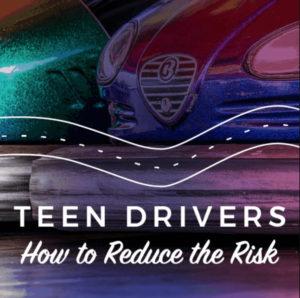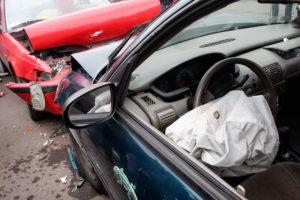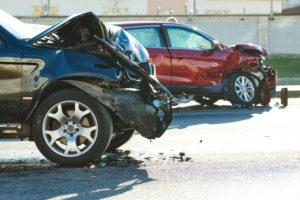
Any parent who has a child of driving age knows that the parent’s anxiety balances their teen’s excitement. While it is rare for teen drivers to cause accidents if someone is supervising their driving, teens have one of the highest crash rates of any group during their first six months of driving.
If that isn’t scary enough, accident injuries are the leading cause of death for 15 to 19 year olds, according to the Centers for Disease Control and Prevention (CDC).
Parents often wonder if they’ve done enough to prepare their children for the responsibility of driving. If you’ve got a teenage driver in the family, read on to learn why teen drivers are high risk and what you can do to help keep teens safe on the road.
What Are the Risk Factors for Teenage Drivers?
First and foremost, a teen’s lack of experience behind the wheel means young drivers are less equipped to deal with the hazards they encounter. Unfortunately, the only way to get experience is to spend time driving. This is one reason most states encourage teen drivers to spend plenty of time behind the wheel with their parents or guardians in the car.
While they are still learning the crucial skills necessary to be a safe driver, teen drivers are at an increased risk of accidents and injuries. According to the National Highway Traffic Safety Administration (NHTSA), they may be more affected by the following risk factors on the road:
Speeding
Teens are more likely to drive fast and less likely to know how to react when something goes wrong. According to the NHTSA, teen driver’s speed was a factor in 27 percent of fatal teen crashes during 2019.
Cell Phone Use While Driving
The NHTSA also says although research shows that texting and driving makes a crash 23 times more likely, many teens (and adults) still don’t put down their phones when they are behind the wheel.
Distracted Driving
Cell phones aren’t the only problem – distracted driving comes in all forms. Trying to eat breakfast on the way to class, changing the radio station, or looking at a passenger while talking to them are all distractions if they take place while driving.
Drowsy Driving
Teenagers may stay up late studying, playing sports, or spending time with their friends. Make sure they get plenty of rest before driving. In addition to the dangers of falling asleep at the wheel, driving while drowsy can decrease reaction time. This can make it more difficult for new drivers to recognize and react to the dangers of the road.
Seat Belts
Whether due to inattentiveness or feeling invincible, teen drivers are less likely to wear their seat belts. This simple action can save lives and reduce teen drivers’ risk on the road. Teen driver statistics show that seat belts were not used in almost half of all fatal teen accidents in 2019, per the NHTSA.
Impaired Driving
Many states have a zero-tolerance policy for teenagers who use drugs or alcohol and get behind the wheel. Still, this does not stop some teen drivers from taking this dangerous risk. Data highlighted in a CDC report, 24 percent of drivers aged 15-20 who died in motor vehicle crashes had been drinking alcohol.
Passengers
Teen drivers are 2.5 times more likely to engage in risky driving behavior while a passenger is in the car. While your state’s graduated licensing may limit how many teen passengers your new driver can have in the car, you should set your own limits. Approve riders only if you know they are responsible and will take your teen’s driving privileges seriously.

For a free legal consultation, call 800-537-8185
What Can Parents Do to Encourage Safe Driving for Teens?
Teen driver statistics can be a scary wake-up call for parents. Despite your best efforts, once you hand your teen the keys, they will be on their own. It will be up to them to make the right calls while behind the wheel. However, parents can take several actions to help prepare and educate new drivers.
Have a Conversation With Your Child About Teen Driver Safety
The CDC recommends using a teen driving contract to guide a conversation about safe driving with your teen. Talking to a new driver early and often can help them understand why it is so important to follow the rules of the road. It also can teach teens how to reduce their driving risks on the road.
During this conversation, you will want to address the usual and more unusual problems they can expect to face on the road. This should include:
- Traffic laws
- Weather conditions
- Vehicle maintenance
- Handling aggressive drivers
- Distracted driving
- Peer pressure
- What to do if they ride with a friend who drives carelessly
This conversation is a good time to teach your child of zero-tolerance policies for alcohol and drug use. It is important to remind them that even over-the-counter drugs and prescription medications can impair one’s ability to react to road hazards.
Know Your State’s Graduated Driver License (GDL) Laws
All 50 states have enacted GDL laws, according to the Insurance Institute for Highway Safety (IIHS). The purpose of GDL laws is to give new drivers a chance to build their skills before driving independently. These laws have three tiers:
- New drivers use a learner’s permit to drive with supervision.
- Upon turning age 16 and meeting other requirements like completing driver’s education, the teen receives a provisional license allowing them to drive on their own but with limitations.
- After completing their provisional requirements, the driver will acquire a full driving license.
These laws address some of the main causes of teen driving accidents, including driving at night, distracted driving, and driving with passengers. Your state’s GDL requirements will likely be a crucial baseline for the rules you set for your teen driver.
Reconsider the New Car
Allowing your teen driver to take the keys to your primary vehicle may sound like a hindrance and a risk. However, studies have shown that teens are far more likely to drive safely when they are in the family car instead of their own ride. If you do get your teen a vehicle, Consumer Reports recommends focusing on safety features instead of the sporty model.
Enroll Your Teen in Driver’s Education
Many states require driver’s education courses before a teen can get a provisional license. These courses cover the rules of the road and the wide variety of hazards new drivers face.
Not only do they give teens a chance to learn these rules in a hands-on environment, but teens will also have the chance to hear this important information from someone besides their parents. Even in areas where these courses are not required, they are a good idea and beneficial to new drivers.
Consider Using an App to Monitor Your Teen’s Driving
Several devices and apps on the market allow parents to check in on their teenage drivers. Parents can use a GPS device to see where their child is and where they have been. In addition, according to ABC News reports, some apps even show parents if the teen was engaging in risky behavior, such as speeding. This allows parents to create a teachable moment before an accident occurs.
Set Clear Boundaries and Consequences
Enforcing the rules isn’t fun, especially when you must become a shuttle driver for your teen after they break a rule. However, setting boundaries and enforcing consequences are straightforward ways to show your teen driver that you mean business.
Be sure to explain again that the rules protect your teen and everyone on the road. Consider putting your expectations and consequences in writing when your teen starts to drive so that everyone is on the same page.
Be a Good Example
Parents frequently overlook one of the most basic and impactful things they can do to help their teens become safe drivers. Parents often fail to follow the rules they expect their teens to learn. When a teen asks about it, they will justify the behavior using their driving experience or “because I’m the parent.”
However, a better approach is to follow the rules you set for your teen. Not only are you setting a good example for your family, but you will also become a safer driver.
Click to contact our personal injury lawyers today
What If My Teen Was in an Accident?
Many people worry about their own teens causing a crash, but what if your teen was hurt in a collision? Teen drivers and their passengers are commonly injured in crashes due to another driver’s negligence
In many cases, the insurer may try to blame a cautious teen driver for the accident because that’s the stereotype. You will need to develop strong support for your insurance claim that proves the cause of the collision.
Working with a personal injury attorney familiar with teen car accident cases can make this process easier. With a law firm on your side, you can focus on your teen’s treatment and recovery while your attorney handles the case.
Have You or Someone You Love Been Injured in a Teen Driving Accident?
If your teen got hurt in an accident that another driver caused, the Morris Bart law firm will review your legal options with you for free. We work on a contingency fee basis, which means we can start on your case with no upfront payment. You may be eligible to file a claim and recover money for medical bills, property damages, emotional distress, and more.
We have 15 office locations throughout Louisiana, Mississippi, Alabama, and Arkansas. Call (800) 537-8185 now to speak with a lawyer near you.
Questions?Call 800-537-8185
to find a Morris Bart office near you.





